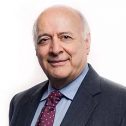

Financial planners can usually give generic advice that will be appropriate for the majority of Americans, and that’s the goal of this article. If we can get the fundamentals of cash-flow planning right (where to put your money after you earn it and pay your taxes and bills), we’re 80% of the way towards maximizing our financial situation.
That’s the concept of the MED…which I’m borrowing from Tim Ferriss’ book “The 4 Hour Body”.
When I decided I wanted to lose 20 pounds, I picked up Tim’s book and his discussion of the MED connected with me because I don’t really care about all the details of nutritional science.I just wanted the one-page(or less) plan I could start taking action upon immediately, and I know many people feel that way about their finances. By the way, Tim’s “slow carb diet” works…I’ve lost 20.2 pounds (194.6 to 174.4) and 4% body fat (19.7 to 15.7) in about 3 months by following his plan with probably 75% consistency. Dieting, as well as personal finance, is mostly behavior instead of intellect. If you follow Tim’s plan, you’ll lose weight. If you follow thebasic cash flow financial plan I’m about to outline, you’ll lower your tax bill and increase your net worth over the long term…and that’s probably the biggest difference as seeing the results of good financial behavior may take years or decades instead of weeks or months. One of the greatest gifts we’ve all been given is the power to choose, it’s truly up to you.
WE RECOMMEND THE VIDEO: What Is Option & Futures - For Beginners
Open your trading account & get all the free training programs designed by shakti mishra.
I’ll start by outlining the plan, and then explain the details after the fact. Note that this assumes you already have your debt situation under control with no interest-bearing credit card balance, little or no student and/or car loans, and a home mortgage that’s no more than 2x your annual household income. Otherwise you really need to consider first focusing on reducing your debt to more manageable levels.
3 Step MED Cash Flow Plan
- Step 1: Keep about 1-2 months’ worth of living expenses in your checking account.
- Step 2: Keep about 6 months’ worth of living expenses in a high yield savings account or taxable brokerage account holding short term treasury ETF’s or money market mutual funds. If you have any lump sum capital expenses due within the next 3-5 years, this is also the place to keep it.
- Step 3: Invest the rest of your capital in a globally diversified equity fund portfolio in the most tax efficient manner possible.
Remember, this is the MED plan. I’m intentionally leaving out a lot of minor details that a great financial planner can help you fill in to keep you focused on the most important points. In America, I believe that if you 1. Earn an above average household income (roughly $60,000), 2. Minimize your debt, and 3. Follow the above steps, long term wealth building is both simple and inevitable. Not possible, but inevitable. Unavoidable. Unstoppable. The more you complicate it or make excuses, the more likely you are to give up. Remember that “perfection is achieved, not when there is nothing more to add, but when there is nothing left to take away.”
Step 3 is probably the most ambiguous part of the plan. I do have an opinion on what the optimal equity portfolio might look like, which is another area for a great financial planner to add value, but a good starting point for a MED investor might be a fund like VT or ACWI. As of last week, most major brokerage firms are now offering ETF’s commission free.This means you can now buy a portfolio of more than 8,000 stocks across 47 countries commission free and at an annual expense ratio of just 0.09%. That’s truly amazing, and why there has probably never been a better time to be an investor. Some other experts might instead recommend a target date fund as a single fund solution, but the elegance of the above plan is that it automatically builds in a “glide path” based on your personal situation. There are only minor modifications required for a retired investor. With regard to tax-efficiency, first start with tax advantaged accounts like your employer 401(k), HSA’s, and IRA’s. If you’ve maxed out these accounts and still have money left over, owning the same fund or portfolio in a taxable brokerage account is a great choice.
As simple as this plan is, chances are you’re not doing it right now…I frequently find new clients holding way too much in cash, not even maximizing the yield on that cash, poor diversification with the equity funds they own, not taking full advantage of retirement accounts, too many accounts, speculative investments bordering on gambling, and the list goes on. Just as people will dismiss Tim Ferriss’ book on dieting as “too simple”, the same can be said with this financial plan.So how about another quote: “Simplicity is the ultimate form of sophistication.” If you’re at all familiar with the concept of minimalism, you should see the common themes here. Every account and every investment should have a specific purpose, otherwise get rid of the clutter the same way you would with items in your home.
I’m a financial planner, and I believe that great advice on the 20% of details that go beyond the MED can add massive value and be worth well in excess of the fee charged. Additionally, just as you might wonder if I’ll relapse on the 20 lbs I’ve lost over the last 3 months and eventually eat everything in sight, a great financial planner will be there for you when needed. I act as a behavioral coach to clients for ongoing advice and guidance beyond the initial financial plan, empathetically but firmly reminding you “you don’t want to do that (go to cash/sell this/buy that/etc.)” when markets are at extremes. But at minimum, if you’re a well-behaved DIY investor you might want to consider hiring a financial planner for at least an initial second opinion on your plan and portfolio.
Jesse Blom is a licensed investment advisor and Vice President of Lorintine Capital, LP. He provides investment advice to clients all over the United States and around the world. Jesse has been in financial services since 2008 and is a CERTIFIED FINANCIAL PLANNER™ professional. Working with a CFP® professional represents the highest standard of financial planning advice. Jesse has a Bachelor of Science in Finance from Oral Roberts University. Jesse manages the Steady Momentum service, and regularly incorporates options into client portfolios.
What Is SteadyOptions?
Full Trading Plan
Complete Portfolio Approach
Diversified Options Strategies
Exclusive Community Forum
Steady And Consistent Gains
High Quality Education
Risk Management, Portfolio Size
Performance based on real fills
Non-directional Options Strategies
10-15 trade Ideas Per Month
Targets 5-7% Monthly Net Return
Recent Articles
Articles
Pricing Models and Volatility Problems
Most traders are aware of the volatility-related problem with the best-known option pricing model, Black-Scholes. The assumption under this model is that volatility remains constant over the entire remaining life of the option.
By Michael C. Thomsett, August 16

- Added byMichael C. Thomsett
- August 16
Option Arbitrage Risks
Options traders dealing in arbitrage might not appreciate the forms of risk they face. The typical arbitrage position is found in synthetic long or short stock. In these positions, the combined options act exactly like the underlying. This creates the arbitrage.
By Michael C. Thomsett, August 7

- Added byMichael C. Thomsett
- August 7
Why Haven't You Started Investing Yet?
You are probably aware that investment opportunities are great for building wealth. Whether you opt for stocks and shares, precious metals, forex trading, or something else besides, you could afford yourself financial freedom. But if you haven't dipped your toes into the world of investing yet, we have to ask ourselves why.
By Kim, August 7

- Added byKim
- August 7
Historical Drawdowns for Global Equity Portfolios
Globally diversified equity portfolios typically hold thousands of stocks across dozens of countries. This degree of diversification minimizes the risk of a single company, country, or sector. Because of this diversification, investors should be cautious about confusing temporary declines with permanent loss of capital like with single stocks.
By Jesse, August 6

- Added byJesse
- August 6
Types of Volatility
Are most options traders aware of five different types of volatility? Probably not. Most only deal with two types, historical and implied. All five types (historical, implied, future, forecast and seasonal), deserve some explanation and study.
By Michael C. Thomsett, August 1

- Added byMichael C. Thomsett
- August 1
The Performance Gap Between Large Growth and Small Value Stocks
Academic research suggests there are differences in expected returns among stocks over the long-term. Small companies with low fundamental valuations (Small Cap Value) have higher expected returns than big companies with high valuations (Large Cap Growth).
By Jesse, July 21

- Added byJesse
- July 21
How New Traders Can Use Trade Psychology To Succeed
People have been trying to figure out just what makes humans tick for hundreds of years. In some respects, we’ve come a long way, in others, we’ve barely scratched the surface. Like it or not, many industries take advantage of this knowledge to influence our behaviour and buying patterns.

- Added byKim
- July 21
A Reliable Reversal Signal
Options traders struggle constantly with the quest for reliable reversal signals. Finding these lets you time your entry and exit expertly, if you only know how to interpret the signs and pay attention to the trendlines. One such signal is a combination of modified Bollinger Bands and a crossover signal.
By Michael C. Thomsett, July 20

- Added byMichael C. Thomsett
- July 20
Premium at Risk
Should options traders consider “premium at risk” when entering strategies? Most traders focus on calculated maximum profit or loss and breakeven price levels. But inefficiencies in option behavior, especially when close to expiration, make these basic calculations limited in value, and at times misleading.
By Michael C. Thomsett, July 13

- Added byMichael C. Thomsett
- July 13
Diversified Leveraged Anchor Performance
In our continued efforts to improve the Anchor strategy, in April of this year we began tracking a Diversified Leveraged Anchor strategy, under the theory that, over time, a diversified portfolio performs better than an undiversified portfolio in numerous metrics. Not only does overall performance tend to increase, but volatility and drawdowns tend to decrease: